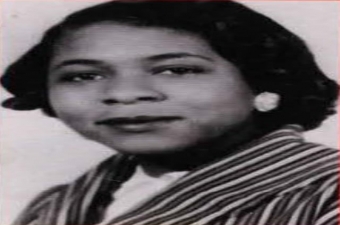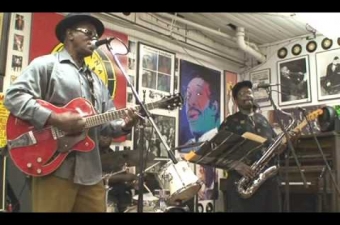Houston’s School of Music
1461 North Claiborne AvenueNew Orleans LA 70116
William Houston Sr. played piano all over New Orleans in the mid-1900s, from classical recitals to church services to dance halls. His greatest legacy, though, may be as an educator and organizer. His own training included degrees from Xavier University and a master’s in music education from Northwestern University in Illinois, a rare attainment for a Black man who grew up in Depression-era Louisiana.
Back home in New Orleans, Houston filled his 16-piece big band with players who taught music in local schools—he knew they could use the extra work. Opening Houston’s School of Music here in 1954 gave them opportunities to give private lessons on the side as well.
Two members of the William Houston Orchestra who taught here, Alvin Batiste and Yvonne Busch, became two of the most influential music instructors in South Louisiana. Batiste developed a teaching method—the root progression system—that gave students a foundation for branching out in any direction they wanted. Mr. Bat, as he was known, went on to found a trailblazing jazz program at Southern University in Baton Rouge and helped introduce jazz education in New Orleans public schools.
Busch taught at Houston’s while serving as the band director at nearby Joseph S. Clark High School. As Author Al Kennedy chronicled, over the next three decades in the school system, Busch trained all-star line-ups of musicians (Sugar Boy Crawford, Smokey Johnson, Herlin Riley) and music teachers (Ellis Marsalis, Clyde Kerr, Jr., Donald Richardson).
Houston’s School of Music included lessons on theory and emphasized reading and writing music to help students qualify for a range of gigs. Alumni included Roger Lewis, baritone saxophone player in Fats Domino’s band and the Dirty Dozen Brass Band; Rockie Charles, the guitar player and singer known as The President of Soul; R&B singer Wallace Johnson; and Ernie Vincent, the guitar man known for his deep funk classic “Dap Walk.” Houston taught renowned trumpeter Wendell Brunious himself.
For decades, Houston also taught at L.B. Landry High School on the West Bank, where he brought professional artists to perform to encourage students to take up music. Author Rick Coleman reported that in 1952 Houston put a student named Clarence Henry in a band of Landry students called the Toppers led by Bobby Mitchell, who would soon record for Imperial Records. Henry got laughs at school by croaking like a frog—a bit he’d make famous as “Frogman” Henry in the 1956 song “Ain’t Got No Home.”
Houston’s advocacy carried over to professional musicians as well as students: for years he served as president of the American Federation Musicians local 496, the Black musicians’ union, which was headquartered just across North Claiborne from his school (it moved in 1969 when it merged with the local 174, which had been exclusively white).
When Houston, Sr. died in 1974, William Houston, Jr. was well established as a musician and educator in his own right—he played his first gig at age nine, and taught music at Booker T. Washington and Clark High Schools. He was also the proprietor of Houston’s for Music, the instrument and equipment store that shared space with the music school (Houston, Jr. was the first Black dealer of Hammond organs in the country). He kept the William Houston Orchestra active into the 2000s, playing mostly Carnival balls and other society functions.
For more about music education in New Orleans, click here.
For more about North Claiborne Avenue, click here.
For more about the Treme neighborhood, click here.
Videos

"Miss Yvonne Busch: Tricentennial Music Moments" from WWOZ, a brief look at the influential educator.
Video by WWOZ.
"Miss Yvonne Busch: Tricentennial Music Moments" from WWOZ, a brief look at the influential educator.

Rockie Charles, Houston's School of Music alumnus and the "President of Soul," performs at the Louisiana Music Factory in 2007.
Video by LAMUSICFACTORY.
Rockie Charles, Houston's School of Music alumnus and the "President of Soul," performs at the Louisiana Music Factory in 2007.

Ernie Vincent, whose only formal guitar lessons were at Houston's School of Music, performs and discusses his work, including his signature song "Dap Walk."
Video posted by Bill Bowman.
Ernie Vincent, whose only formal guitar lessons were at Houston's School of Music, performs and discusses his work, including his signature song "Dap Walk."
Images


















